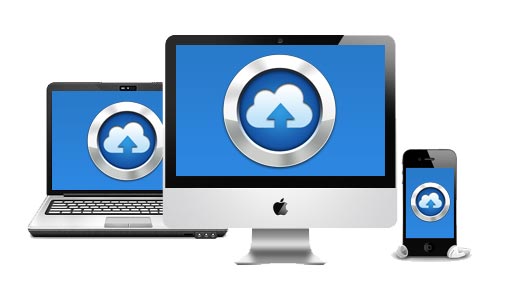There are many ways to back up your invaluable data safely and easily, without breaking the bank. Like a well tended stock portfolio, the key is in diversification. You can minimize the risk of disruption to your business in the event of a computer or server failure by backing up your data in several ways.
Local Backups
You can create backups of your data within your office using a flash drive, external hard drive, or another computer on your network. A USB flash drive or external hard drive can be purchased online or at your local electronics store. The most feature rich solution is the time capsule from Apple which includes 2 TB of storage, a secure wifi base station, with Mac and PC compatibility.
A RAID Array takes some work to implement if your server does not already support the technology, but is well worth the effort in any event. A RAID 1 or RAID 5 configuration would ensure continuity of operations in the event of a single hard drive failure. RAID 1 uses two hard drives of the same size and keeps a mirror image of your hard drive at all times. RAID 5 requires 3 drives and can rebuild data from any two of the drives without interruption. You can read more about configuring RAID.
In the event that one hard drive fails, the server will continue as normal using the alternate. You can then replace the dysfunctional hard drive at your convenience (even while the server is running!), and the server will automatically configure the new drive once inserted. The RAID configuration is the most difficult strategy to implement, but will ensure that there is no downtime in the inevitable event of a hard drive failure.
It is important to distinguish between hard disk drives (HDD) and solid state drives (SSD). HDD is an older, cheaper, and more commonly available technology. It features high storage capacity at low cost, but has relatively slow speeds and a short lifetime because of the internal moving parts. SSD comes at a higher cost per gigabyte, but has fast access times and a long lifetime because it has no moving parts (like a flash drive).
Cloud Backups
Keeping a local backup is important, but does not protect you from theft, natural disasters, or the damage that comes from frequent handling or daily use. Backing up your data online allows you to access your data securely from anywhere with internet access. You do not have to worry about hard drive types or lifetimes, because it is the responsibility and duty of your online storage provider. You can use google drive for free up to 15GB per account (with the option to expand storage for a fee). If 15GB is not enough, consider a subscription to MyPC Backup, Dropbox, Mozy, or Carbonite.
Automation
The best backup strategy is the one that you don’t have to think about. You can set up local and/or cloud backups to occur automatically on a schedule of your choosing. Make sure that your computer is on during the time that you schedule the backup, or the backup may not occur! Equally important is testing your backups periodically to ensure that you can recover the data.
Restoring from a back up
Each storage alternative has its own procedure for restoring data. Make sure you are familiar with the procedure for your backup solution. Online services can usually restore with the click of a button, and local backups can be copied back to your origin server.

